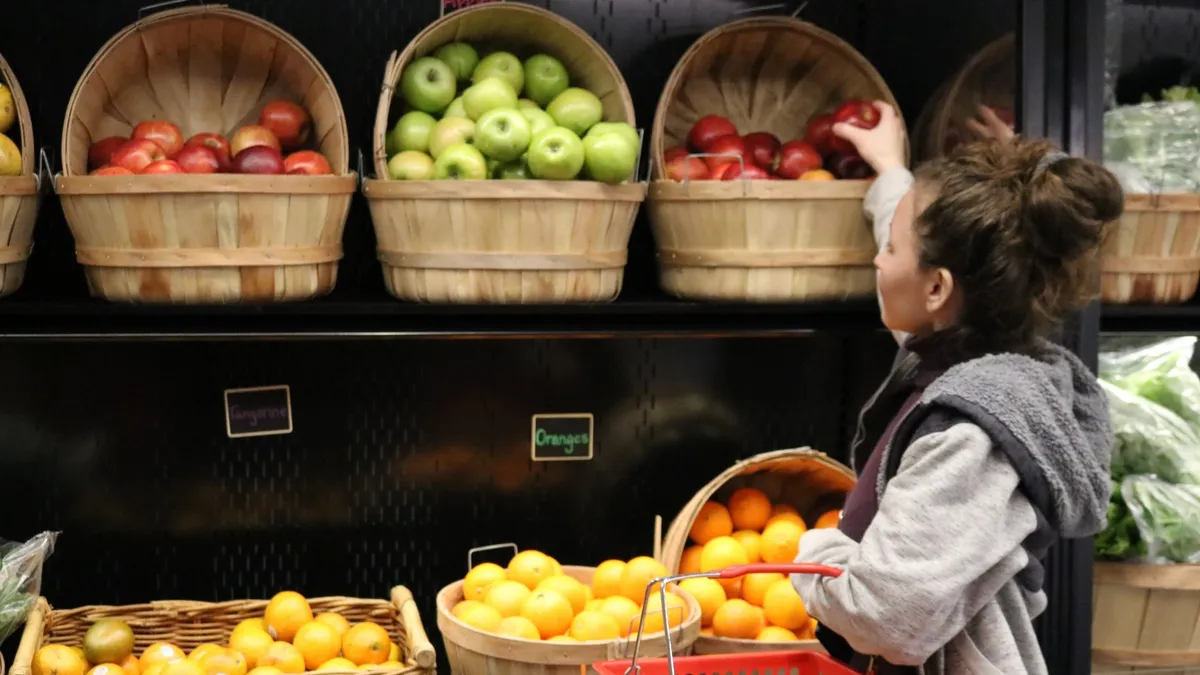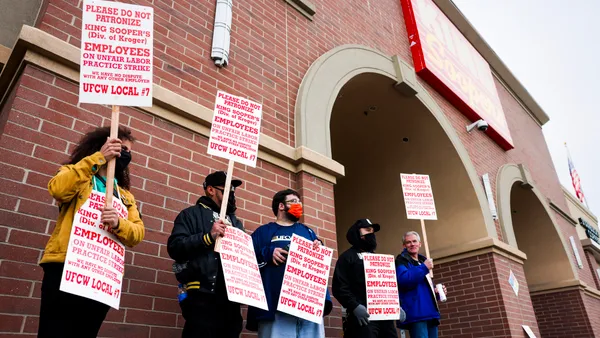Dive Brief:
- Grocery prices are expected to increase by 3% on average this year, the USDA forecasts, according to a report in Fern's Ag Insider. This would be the highest increase in grocery costs the country has experienced since 2011, and it would see grocery prices rising faster than the cost of food from restaurants and fast-food chains.
- This average increase is due to the surge in meat, poultry and fish demand caused by coronavirus. Meat, poultry and fish account for one-fifth of grocery spending, Ag Insider reported.
- Shoppers can expect beef prices to rise by 8%, pork by 4.5% and poultry by 3% in 2020 compared to last year, according to USDA data. Fish and seafood prices will see a 2% increase this year, higher than forecasted but below the 2.4% 20-year average. Beef, pork and poultry’s averages for 2020 will exceed their long-term average. Beef and pork’s increases are double the average annual rate.
Dive Insight:
The sudden spike in demand fueled by the coronavirus has caused a strain on the supply chain, particularly for packing and processing plants, which slowed production because of sick workers. Grocers also enforced limits on meat sales to consumers.
According to Fern's Ag Insider, these plants have since implemented health protocols and have “recouped much of the lost slaughter capacity.” However, red meat production, which includes beef, veal, pork and mutton, is down 2% since Jan. 1.
Vegetable and fruit prices should only see a modest 1% rise this year. In order to grow crops, fresh food growers rely on skilled labor which is expected to be scarcer and social distancing compliance could reduce productivity, the USDA found.
Store prices for groceries rise because grocery stores chains see price increases from manufacturers. Publix told CNN Business that the chain tries to absorb as much of the increase as it can before passing costs on to shoppers. However, the National Grocers Association, a trade association that represents independent grocers, said its clients will continue to follow their existing pricing structures, CNN reported. In this case, most price increases will be passed on to consumers.
Price increases could push customers to shop at stores beyond their primary grocer in order to look for the cheapest prices and promotions. It could also lead to an increase in sales of private-label goods, which are often sold at lower price points. Grocers could also begin to see less demand for grocery products from consumers as restaurants begin to reopen.













